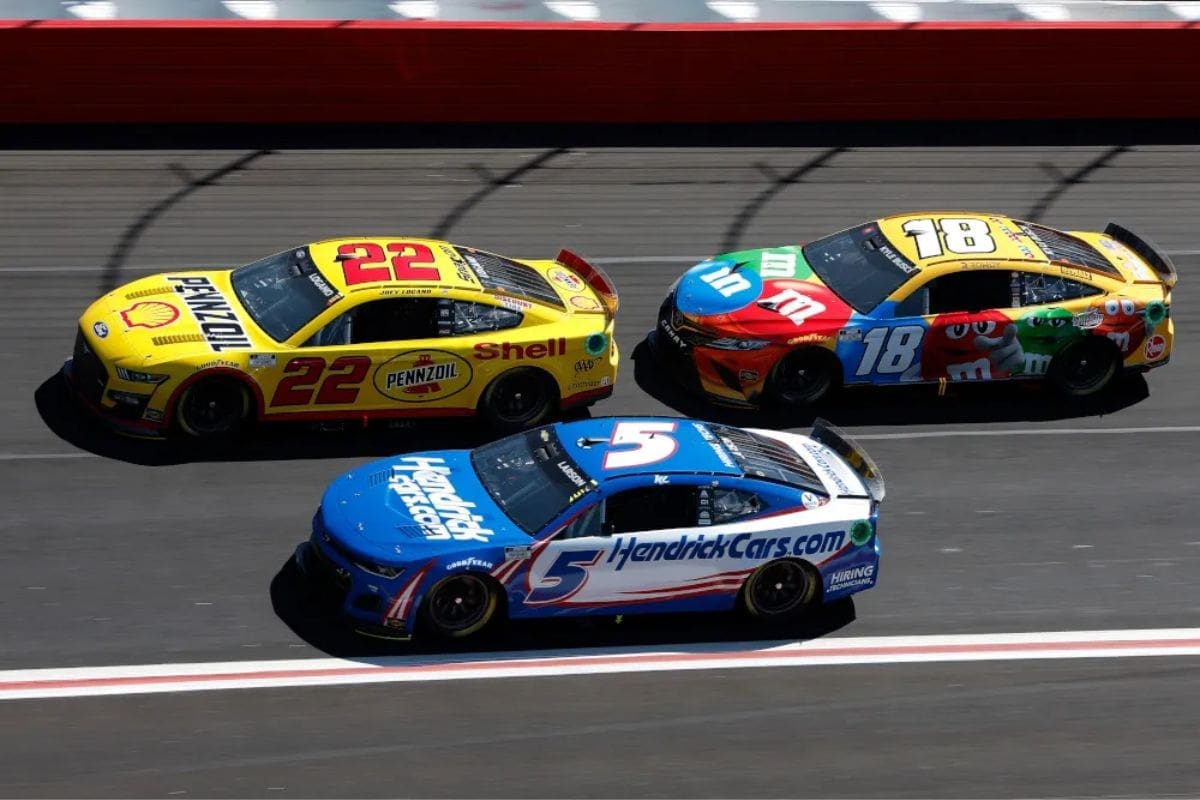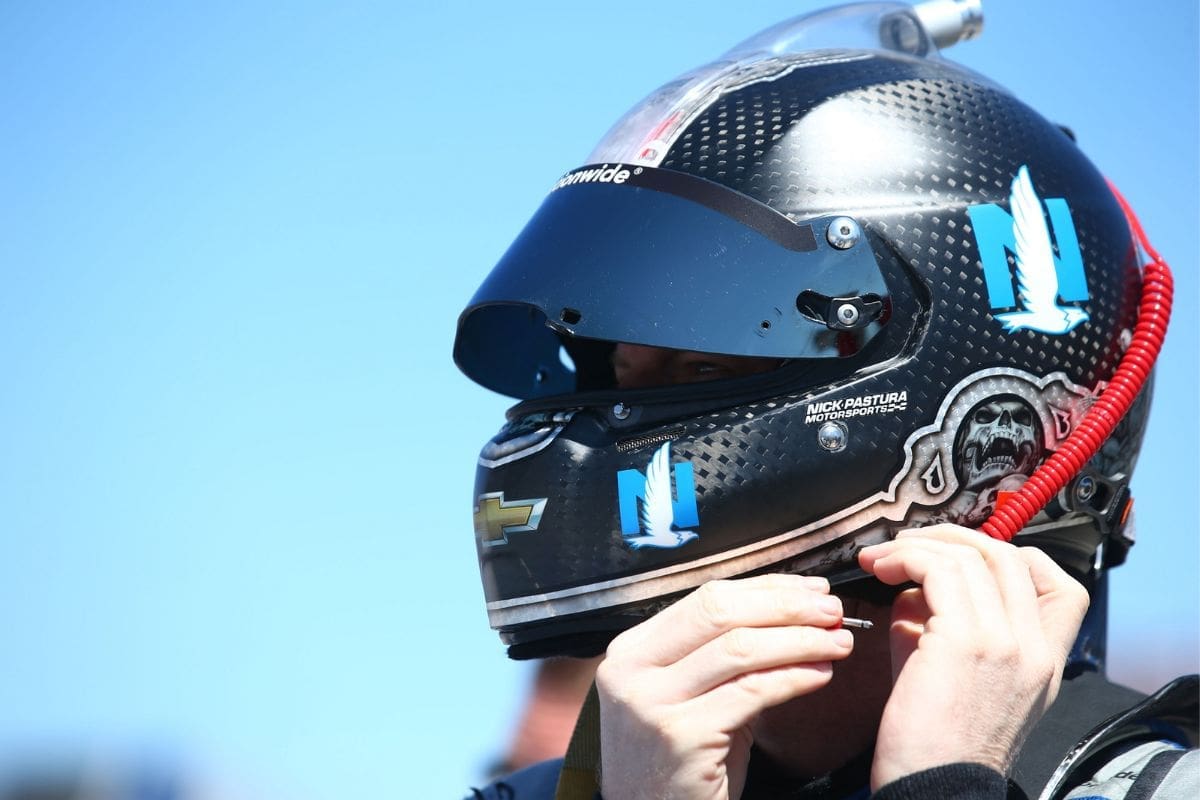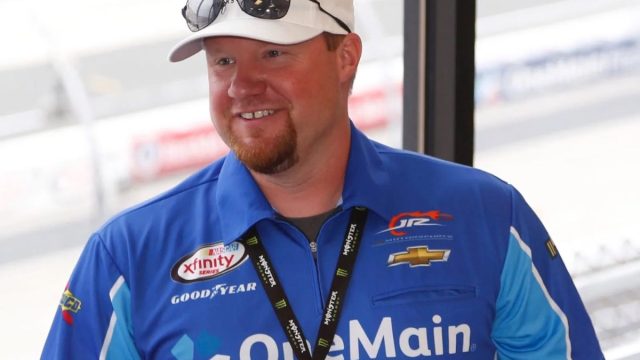Ex-Cup Spotter Criticizes NASCAR: , a respected ex-Cup spotter, has recently voiced his concerns about NASCAR’s decision to eliminate practice sessions for the Atlanta race. Griffin’s critique delves into the potential risks this decision poses to driver safety.
This discussion has sparked a heated debate within the racing community, with many questioning NASCAR’s stance on the importance of practice sessions and its impact on the drivers’ ability to adapt to track conditions.
As we delve into Griffin’s critique and NASCAR’s response, it becomes evident that the implications of less practice on a high-speed track like Atlanta could significantly alter the dynamics of the race and potentially compromise driver safety.
Brett Griffin’s Critique of NASCAR’s Practice Policy
Brett Griffin’s scathing critique of NASCAR’s practice policy sheds light on the potential impact of reduced practice time on driver safety and performance. As a seasoned spotter and co-host of Door Bumper Clear, Griffin’s analysis carries significant weight within the NASCAR community. His vocal criticism of the decision to curtail practice time resonates with many who share concerns about the recent surge in on-track crashes. Griffin’s emphasis on the pivotal role of practice sessions for both rookie and veteran drivers underscores the intricate relationship between track familiarity, car adjustments, and overall safety.
His pointed remarks also draw attention to the decision to cancel practice sessions before qualifying races. Griffin’s examples of drivers like Chandler Smith and Conor Daly facing challenges due to insufficient practice highlight the real-world consequences of this policy shift. While NASCAR’s rationale for reducing practice revolves around cost-cutting and promoting competitive balance, Griffin and others argue that these measures come at the expense of on-track safety.
Griffin’s critique sparks essential conversations about the delicate balance between cost efficiency and ensuring optimal conditions for driver safety and performance. It raises pertinent questions about the potential trade-offs of reduced practice time and the broader implications for the sport.

NASCAR’s Stance on Practice Sessions
NASCAR’s decision to eliminate practice sessions before qualifying or Duel races, as well as the upcoming Atlanta race, has ignited a fervent debate within the racing community, with divergent opinions from drivers and fans. The rationale behind this move includes cost-cutting measures to extend the longevity of cars and to promote parity among teams by limiting the advantage that bigger teams may have with more practice time.
- Drivers’ Perspectives: Ricky Stenhouse Jr. and Michael McDowell have acknowledged the potential benefits of reducing practice sessions, particularly for smaller Cup teams. They argue that it levels the playing field by preventing bigger teams from utilizing their resources to maximize their cars’ potential.
- Resource Disparity: Stenhouse and McDowell emphasize the disparity in resources between big and small teams and how reducing practice may bridge this gap.
- Promoting Parity: The decision aligns with NASCAR’s goal of promoting parity among teams, as it prevents larger teams from gaining an unfair advantage through extensive practice.
This decision underscores NASCAR’s commitment to fostering fairness and competitiveness within the sport, although it has sparked intense discussions about the impact on driver safety and the overall racing experience.
Potential Implications of Less Practice
The decision to reduce practice sessions in NASCAR has sparked a contentious debate within the racing community. Divergent opinions from drivers and fans have emerged, and now, the potential implications of less practice have come under scrutiny.
While the move may promote parity among teams, it raises genuine concerns about on-track safety. Critics fear that less practice time could heighten the risk of accidents, particularly for rookie drivers who require more track time to acclimate to race conditions. Moreover, the absence of practice sessions limits teams’ capacity to fine-tune their cars for both optimal performance and safety.
Although there may be potential benefits for smaller teams, there exists a delicate equilibrium between fostering parity and ensuring on-track safety. As NASCAR continues to navigate this equilibrium, drivers, teams, and fans remain vigilant, fervently hoping that the reduction in practice time does not compromise the safety and integrity of the sport.
The implications of less practice are multifaceted, impacting not only the competitive landscape but also the fundamental safety of drivers and the overall integrity of NASCAR races. This ongoing debate underscores the need for a nuanced approach that balances fairness with the paramount importance of safety on the racetrack.

News in Brief
Our Reader’s Queries
Q. How does NASCAR increase safety for their drivers?
A. In response to a series of fatal accidents resulting in skull fractures, NASCAR implemented mandatory usage of the HANS (Head and Neck Support) device for drivers. This safety measure aims to reduce the risk of head and neck injuries in the event of a crash. Additionally, NASCAR briefly permitted the use of the Hutchens device; however, it was subsequently banned in 2005 due to test failures.
Q. Do NASCAR drivers have spotters?
A. In the early to mid-1990s, NASCAR took steps to standardize the organization of spotters, eventually making their presence mandatory. At each track, a designated area was reserved for spotters, strategically positioned to provide the best possible view of the racing circuit.
Q. What is the most cautions in a single NASCAR race?
A. In 2000, Matt Kenseth secured his first career victory. In the 2001 race, Jeff Burton emerged as the winner, but Tony Stewart made headlines by successfully completing the Memorial Day Double. The 2005 edition set a new record for the most cautions in any NASCAR Cup Series race, with 22 caution periods.
Q. What is the NASCAR caution?
A. The yellow flag, also known as the caution flag, is displayed in NASCAR races to signal a hazard on the track. This can be due to accidents, debris, light rain, the entry of emergency vehicles (especially on short tracks without a tunnel), or for a scheduled competition caution, typically used in races that have been postponed due to inclement weather.
ALSO READ: NASCAR No-Airbag Policy: Unpacking the Safety Strategy
